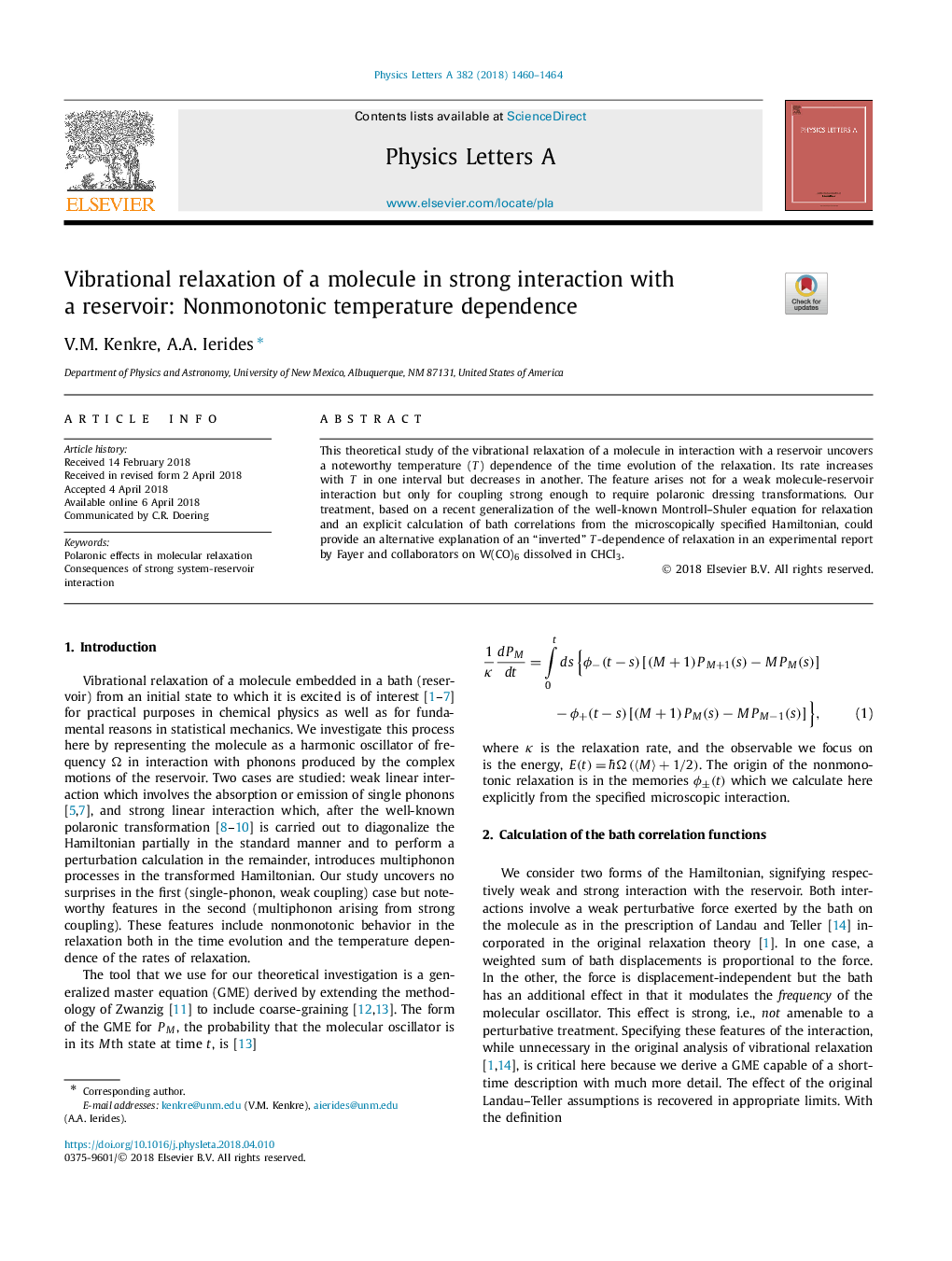| Article ID | Journal | Published Year | Pages | File Type |
|---|---|---|---|---|
| 8203395 | Physics Letters A | 2018 | 5 Pages |
Abstract
This theoretical study of the vibrational relaxation of a molecule in interaction with a reservoir uncovers a noteworthy temperature (T) dependence of the time evolution of the relaxation. Its rate increases with T in one interval but decreases in another. The feature arises not for a weak molecule-reservoir interaction but only for coupling strong enough to require polaronic dressing transformations. Our treatment, based on a recent generalization of the well-known Montroll-Shuler equation for relaxation and an explicit calculation of bath correlations from the microscopically specified Hamiltonian, could provide an alternative explanation of an “inverted” T-dependence of relaxation in an experimental report by Fayer and collaborators on W(CO)6 dissolved in CHCl3.
Related Topics
Physical Sciences and Engineering
Physics and Astronomy
Physics and Astronomy (General)
Authors
V.M. Kenkre, A.A. Ierides,
